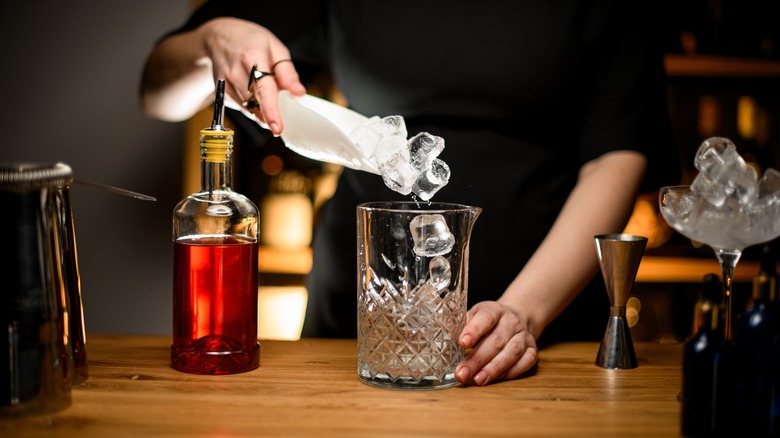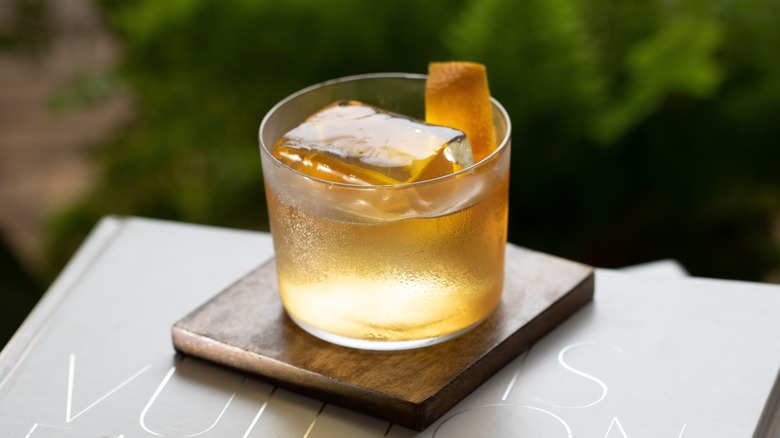How Water And Ice Actually Affect The Way You Mix Cocktails
We may receive a commission on purchases made from links.
Ice and water may not sound like glamorous cocktail ingredients, but they are crucial. One of the biggest misconceptions about ice is that its only job in a cocktail is to chill. In fact, the only way ice can even chill a cocktail is by melting, since the ice must absorb heat from the beverage to lower the overall temperature. Thus, a basic tenet of cocktail mixing is that there is no chilling without dilution. Bartenders must account for this when deciding whether to shake or stir a particular cocktail. There is also the lesser-known move of throwing cocktails used by seasoned mixologists, which occupies the middle ground between shaking and stirring in terms of dilution. Shaking also results in air mixing with the liquid as it's vigorously thrown about in the shaker, giving the drink a velvety texture.
Plain water is rarely added to a cocktail, and even the simplest highball cocktail uses sparkling or soda water along with ice. How the ice is incorporated into a cocktail determines the way it melts and mixes with the beverage. Whether it is in the form of small cubes, a large block, or crushed, also makes a difference to the final drink. Ultimately, matching the most appropriate method of adding ice with your drink is important. Lexi Parker, Lead Bartender at Poka Lola Social Club in downtown Denver, gave us some helpful tips on how to best incorporate ice and water so they best complement our cocktails.
How you incorporate water and ice affects a cocktail in many ways
The effect of ice on a cocktail comes down to dilution and texture. If your cocktail tastes like it's missing an ingredient, it could be it hasn't been suitably mixed with ice. "Proper dilution is essential to a well-made cocktail, and too much water or ice or an overly stirred or shaken drink is a recipe for an imbalanced drink," says Parker. Many alcoholic drinks, even ones served neat or made only from spirits, need a bit of water to loosen the flavors and make them sippable.
A drink served on the rocks will slowly evolve as the ice melts, mellowing the flavors. However, too much dilution can mute subtle notes, so it's best to use slow-melting ice blocks made with sphere and large cube ice trays. Be more careful with cocktails that are shaken with ice but then served without any. Parker explains the difference: "Drinks served on ice need to be diluted less than drinks that are served neat, and drinks that are all booze (like a negroni or a martini) need to be diluted slightly more so that they don't slap the drinker in the face with boozy heat." Both a negroni and a martini are generally stirred with ice for dilution and served in a chilled glass (the low temperature also cuts some of the alcohol's punchiness).
As for texture, shaken cocktails that contain juices, syrups, or foaming ingredients like egg whites benefit from shaking with ice. This step adds a smooth texture while also diluting and chilling the beverage.

